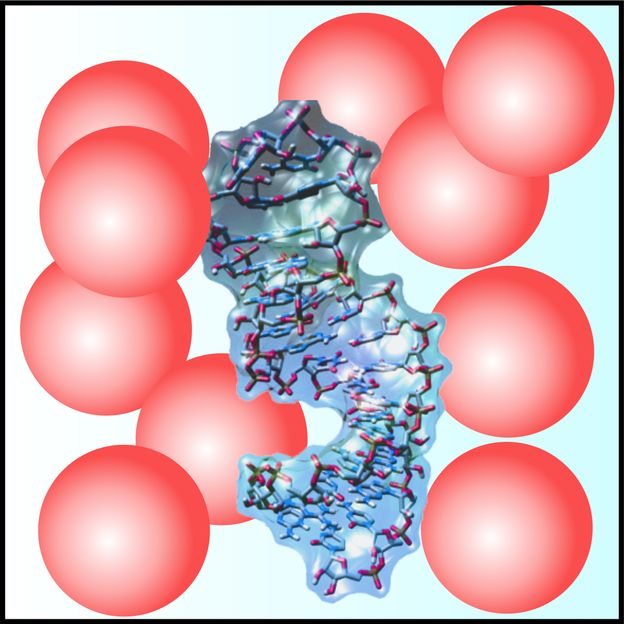Biomolecule’s behaviour under artificial conditions more natural than expected
Comparing cell and test tube
Researchers often analyse isolated biomolecules in test tubes, and it is doubtful if the results can be applied to densely-packed cells. A team from Bochum, Dortmund and Greifswald monitored the folding of an RNA structure in the living cell and compared the results with those of test tube analyses.

Folding experiments in densely packed solutions in the test tube as well as in the living cell facilitate the monitoring of the stability of an RNA hairpin at high spatial and temporal resolution.
© RUB, David Gnutt
The team studied the behaviour of an RNA structure from the microorganism Salmonella in three different scenarios: in a living cell; in an aqueous solution without additives; and in an aqueous solution with various additives that were supposed to mimic the molecules in the cells.
Artificial additives affect RNA behaviour
The additives in the test tube affected the behaviour of the RNA molecules, based on the chemical composition of the additive, and on its concentration and size. Considering those results, the researchers expected the RNA molecule in the living cell – which is densely-packed with various molecules – to exhibit a different behaviour than the RNA molecule in the aqueous solution without any additives.
“To our surprise, we didn’t find any differences, on average, between the living cell and the diluted aqueous solution,” says Junior Professor Dr Simon Ebbinghaus from the Department of Physical Chemistry II at the Ruhr-Universität Bochum, who delineates the results in the journals “Angewandte Chemie” and “Angewandte Chemie International Edition”, together with RUB colleagues at the Department of Biology, at the TU Dortmund and at the Ernst Moritz Arndt University of Greifswald.
Cell and diluted aqueous solution not dissimilar
“Because it contains a large number of macromolecules, the cellular environment is highly concentrated and viscous, similar to the one we simulated using artificial additives,” explains Ebbinghaus. “Unlike the artificial additives, however, the cellular environment appears to modify the RNA stability only marginally.”
In the course of the study, the researchers analysed an RNA thermometer with a hairpin structure. At a higher temperature, the structure fuses, thus triggering a thermal shock response in microorganisms. The colour markings at the ends of the structure enabled the researchers to monitor if the hairpin unfolded under the different conditions or not.
Strong fluctuations in RNA stability in living cells
In the living cell, the stability of the RNA thermometer varied much more strongly than in the test tube. Dynamic changes in the cellular environment may affect the RNA folding continuously, the researchers suspect. The cellular environment might thus constitute a crucial factor for the regulation and modulation of various biological processes.
Original publication
Other news from the department science

Get the life science industry in your inbox
From now on, don't miss a thing: Our newsletter for biotechnology, pharma and life sciences brings you up to date every Tuesday and Thursday. The latest industry news, product highlights and innovations - compact and easy to understand in your inbox. Researched by us so you don't have to.

























































